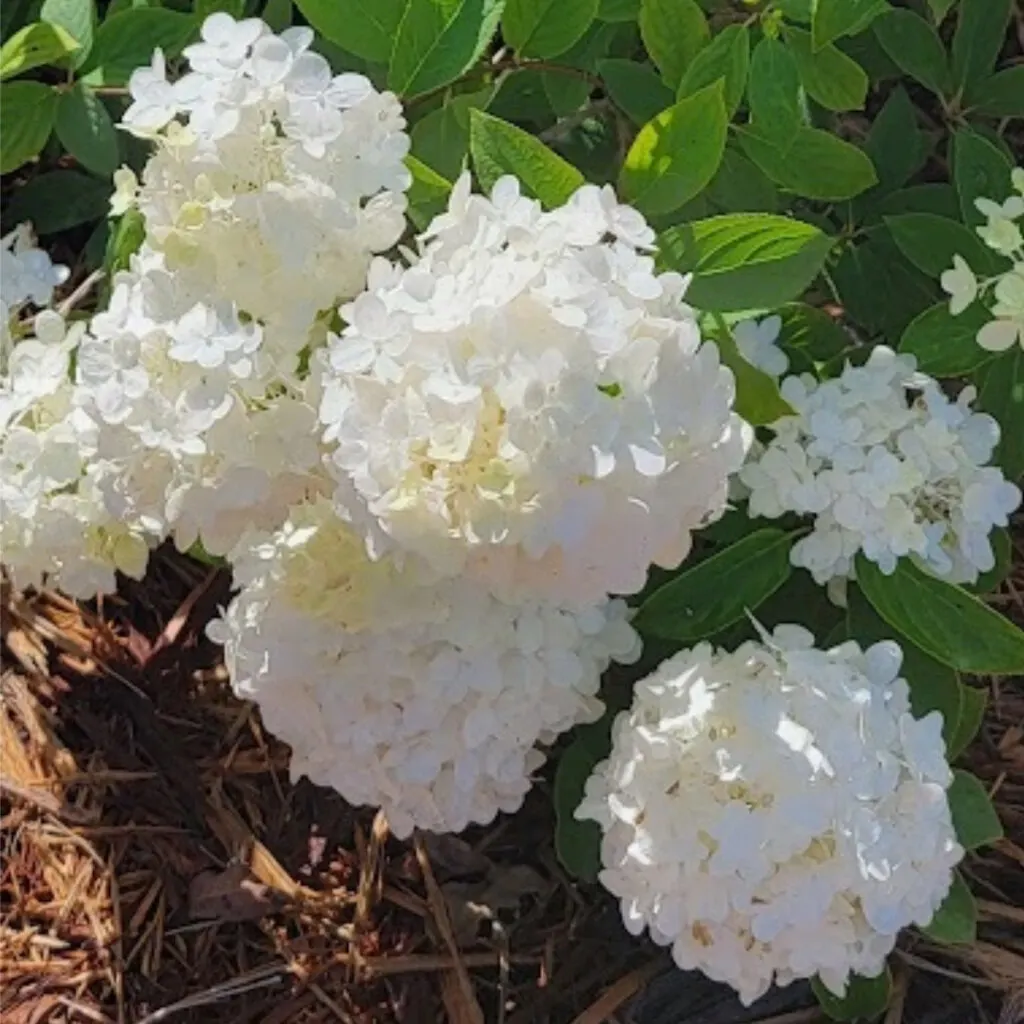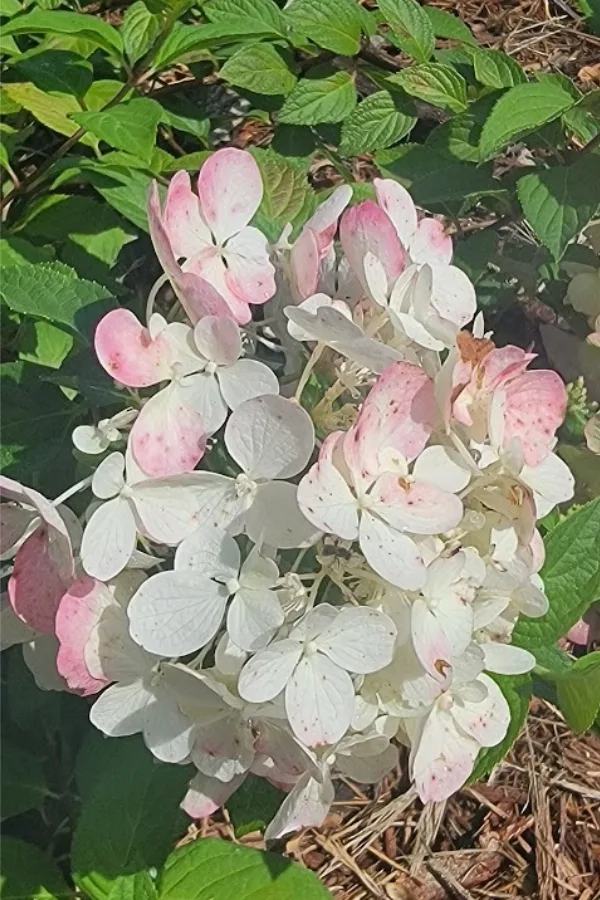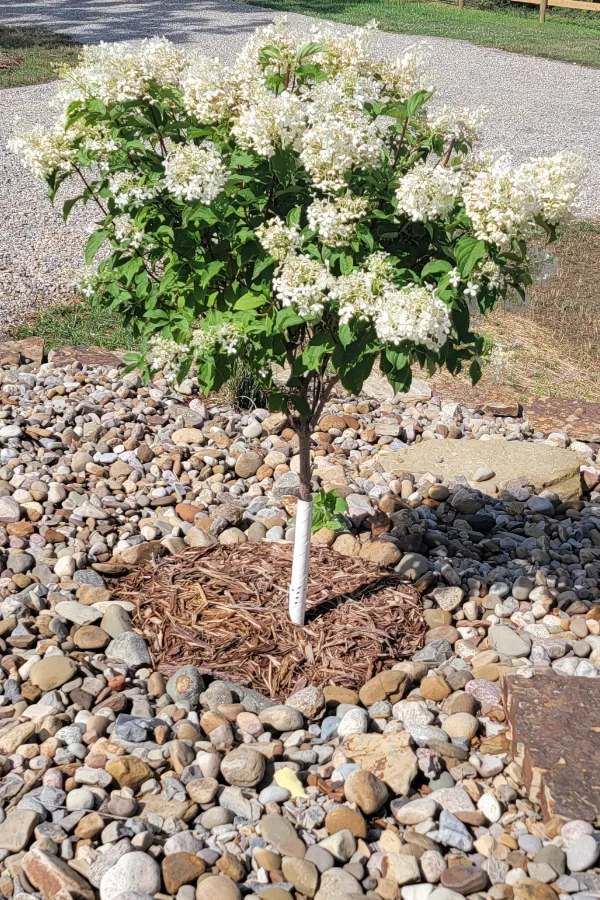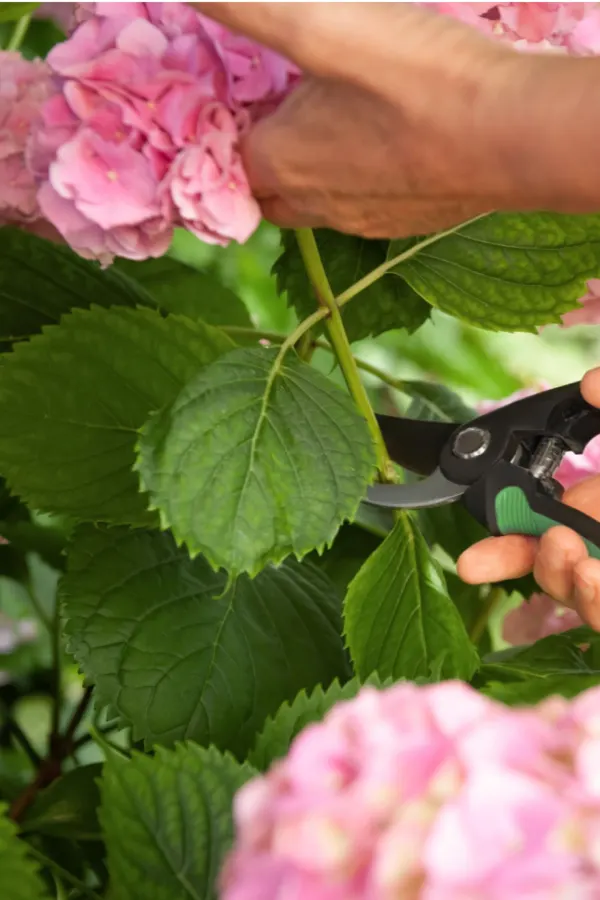Summer flowering hydrangeas are one of the most popular plants of all for growing in the landscape, but did you know that how you care for your summer flowering hydrangeas after they bloom can make a huge difference in how they perform next year – and whether they bloom big – or not even at all?
Hydrangeas are hotter than ever! Especially with all of the amazing new varieties and hybrids that are being introduced with each passing year. In fact, trying to find the perfect one can almost be overwhelming with all of the choices.
From big leaf bushes and their enormous flowering mophead-style flowers, to oakleaf varieties that have gorgeous stacked-stem blooms, to even hydrangea tree varieties – there is a style to fit any landscape and need.

But no matter what variety you grow, they all require a bit of care now and then to keep them blooming strong. Especially at two very critical times for the plant: while they are flowering, and even more, right after they complete their blooming cycle.
How To Care For Hydrangeas After They Bloom In The Summer
Hydrangea Care – Deadheading During A Blooming Cycle
Deadheading is the practice of snipping or cutting off old blooms as they begin to die off. For annual flowers, deadheading helps the plant to generate and produce new blooms. But for perennial hydrangeas, deadheading helps for a whole different purpose.
First and foremost, deadheading your hydrangeas as the blooms fade will help keep your plants looking fresh and alive. But the benefits go far beyond just aesthetics. Removing dying hydrangea blooms also allows the plant to conserve resources for the remaining blooms it still has to open.
The fact is, as long as a hydrangea flower remains in tact to the plant, it continues to use energy. It does this in an attempt to heal and rejuvenate the fading flower. Of course, no amount of energy will help it, but as long as the stem and bloom remain, the plant will keep trying to fix it.
Unfortunately, if the old bloom remains on the plant long enough, the plant then begins to send even more energy and nutrients to it to help the old stem and flower produce seeds. And even more power is lost.
All of that wasted energy can leave the plant weak. And without energy, it can struggle to give the last of the remaining blooms the nutrients they need to flower strong and bright. That weakness can also result in less than ideal foliage.
But as you will see below, even more important, all of that energy loss also can hurt how well your hydrangea will bloom next year too!
Keeping Your Hydrangeas Energized – How To Care For Hydrangeas After They Bloom In The Summer
The good news is that as soon as an old flower is removed, the energy is re-directed elsewhere. As previously mentioned, some of that saved energy is spent on filling out the remaining blooms.
But even more important, the plant also begins to re-direct the excess energy to root growth and nutrient storage. By doing this, it helps the hydrangea begin the process of powering next year’s blooms for an even bigger and brighter bloom set.
How Often To Deadhead – How To Care For Hydrangeas After They Bloom
Deadheading is important all through the flowering process. Start early as your first flowers start to fade. It’s best to remove as many as possible right at the beginning of flowering to keep energy flowing where it’s needed most.
To deadhead properly, cut below the head of the flower and right above the first or second set of leaves below the bloom. When cutting blooms from a plant, always be sure to use sharp, clean, and sanitized pruners.
Dull blades can easily injure the stems. In addition, failing to clean and sanitize blades can allow disease to spread from plant to plant more easily. Cleaning and sanitizing your cutting blades can be as simple as wiping them down with a bleach cloth, but it’s vital to do it to protect your plants.
More than anything, a good, sharp pair of pruners will go a long way to make quick and easy work of the chore. Because many hydrangeas can be quite large, a long handled pair of Bypass Pruners is an excellent choice for pruning and deadheading. For smaller bushes, a basic set of hand held pruners works great.
Pruning Hydrangeas After They Finish Blooming
Once your hydrangea completes its blooming cycle, there is still a bit of work to do. But what you need to do will depend on what variety you are growing. The good news is that even if you don’t know exactly what type you are growing, you can usually tell the variety by when it blooms.
In general, you need to prune summer blooming hydrangeas immediately after they finish blooming. These varieties includes oakleaf (including mophead tree types), bigleaf, climbing and mountain varieties. All of these varieties produce the following season’s flowers on the new growth that occurs to the plant after it finishes blooming in the summer.

This is referred to blooming on “old wood” on a hydrangea plant. It simply means that whatever new growth that occurs from mid-summer up until the first hard frost, that wood will contain the blooms for next year’s flowers.
The Common Mistake Of Pruning Hydrangeas Late – How To Care For Hydrangeas After They Bloom
Unfortunately, if you wait until late summer or fall to prune these varieties back, you are also pruning off the wood that hold’s the following season’s blooms.
It is an all-too common mistake among hydrangea growers. In fact, when most gardeners have trouble getting their hydrangeas to bloom, it’s quite often due to pruning their bushes too late the previous year – and not to poor plant or soil health.
Try to prune back your hydrangeas within a week after the end of their blooming cycle. Begin by deadheading any remaining old blooms. Again, if left, they will form seeds. And that process takes power from the plant that should be going to storing up for next year’s blooms.

Once you have removed all of the old blooms, prune the plant’s branches lightly for shape. When pruning old-wood blooming hydrangeas, less is more. Hydrangeas don’t need to have major pruning to continue blooming. Simply prune to control wild branches and to keep the plant’s form in tact.
Late Summer / Fall Booming Hydrangeas – How To Care For Hydrangeas In The Summer After They Bloom
For smooth and panicle varieties, pruning should be done in late winter or very early spring. These varieties produce their blooms on new wood and bloom in late summer to fall. By pruning the plant before new growth occurs, you are in no danger of removing future blooms.
However, pruning these varieties during the growing season will eliminate same year blooms. Again, much as with summer blooming varieties, late summer and fall hydrangeas do not need to be heavily pruned. Simply prune for shape and control.
Avoid Late Fertilizing – How To Care For Hydrangeas In The Summer After They Finish Blooming
Fertilizing hydrangeas in the early spring before they flower can help create stronger and more vibrant bloom sets. But avoid fertilizing hydrangeas after they finish blooming as well as late in the growing season in the fall.
Fertilizing after they bloom or late in the summer/early fall will cause too much unwanted growth. Growth that is then highly susceptible to winter damage. Not only can it put next year’s bloom set at risk, it can put the overall health of the plant at risk as well.
This “spring only fertilizing” approach applies to all types of hydrangeas, including both summer and late summer/fall flowering varieties.
When you do fertilize in the spring, there is no need for special and very expensive formulated mixes for hydrangeas. A simple, well balanced fertilizer such as Jobes All Purpose Plant Food is more than enough to do the job. This will help to provide pre-bloom power to the plant, and keep it strong and healthy all season long
Here is to caring for your hydrangeas while they bloom – and after. And to having beautiful flowers for many years to come! For more great info on perennials, be sure to check out our “Perennial Care” section on the website.
Happy Gardening! Jim and Mary.


